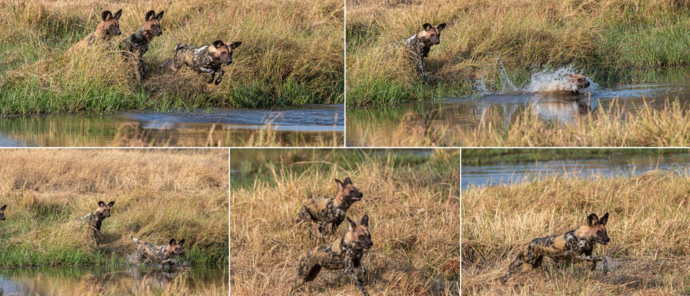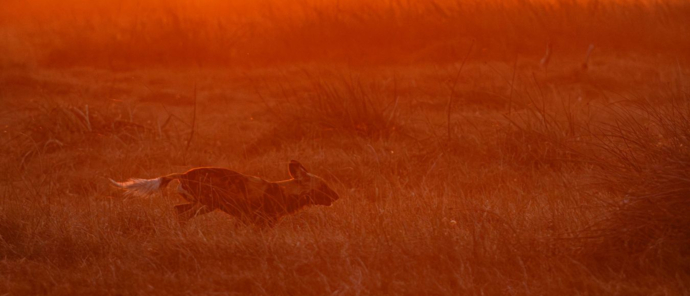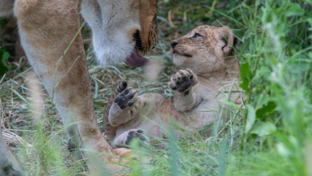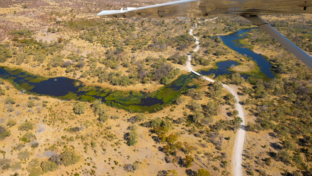Wild Dog Chaos
I call it “Wild Dog Chaos”. There is no other way to describe it. Apart from when they rest between hunts, a wild dog sighting is fast, furious, and utterly engrossing.
During the four days we recently spent at Machaba Camp in the Khwai area, we saw the dogs on three separate occasions, and they were hunting each time. This pack consists of seven dogs, with the Alpha female at the den caring for the pups, who should be around six weeks old by now. That left the six other pack members to hunt, feed the Alpha female, and regurgitate meat for the pups.
There are plenty of impala for the dogs to prey on in the Machaba Camp area, but the speed at which the pack hunts makes them very difficult to follow, let alone photograph.

Our first sighting was a good one because the dogs had already made a kill, and their bloodied faces indicated they were in a slower phase – stopping, walking, and then running at a lope. This pace gave me some time to capture a few pictures.
As an experienced photographer, I had already set up my camera ahead of time to follow the action: on a sunny day, an ISO of 800 and an F8 aperture usually yield good results. I managed to get some decent shots before the pack disappeared into the scrub mopane, and we lost them.
“A wild dog sighting is fast, furious, and utterly engrossing.” – Mike Myers
That evening, we were out again, and one of the vehicles spotted three of the dogs hunting. We caught up with them near the Khwai River just at sunset and witnessed the wonderful sight of the pack reuniting, with the dogs engaging in their elaborate greetings as they came together again.
I only managed a few pictures in the near darkness, but it was such a joy to witness – the unbridled delight of the individual dogs linking up with the others in the pack. Once again, it was a brief but wonderful sighting, full of energy, before they moved off back to the den to share the spoils of the hunt.

We found them again early the next morning, in beautiful light. This was particularly interesting because they were on the other side of the Khwai River and wanted to cross. We followed them along the opposite bank until they settled on a crossing point, waiting for the Alpha male to make the first move. For once, I had more time than usual to set up, and we were parked in the perfect spot to photograph the crossing.
When the Alpha male jumped into the water, the rest of the pack followed quickly, swimming for their lives. Dogs are vulnerable to crocodiles when crossing water, so they choose the quickest place to do this, and things happen fast! I captured the first few dogs as they jumped in and swam, but then shifted my focus to the wet dogs emerging from the river and taking off on the hunt. They ran straight past us, and my pictures turned out well. I was pleased with the results.
Wildlife photography is all about preparation. If you’re using a phone, research the still and video options before your safari and set up the camera so you’re ready from the moment you land at the airstrip – anything can happen at any time.
If you’re bringing more serious equipment, make sure you understand everything about it before you arrive, have used it, seen the results, and know what you’re looking for. That way, if you’re lucky enough to see wild dogs, you’ll at least have a chance to capture some wonderful memories.








